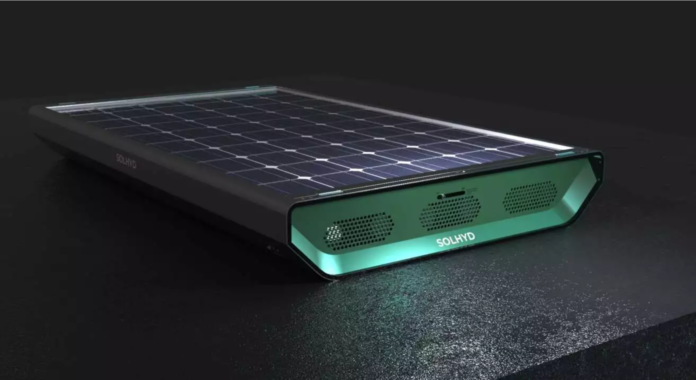With the aid of sunlight, KU Leuven researchers in Belgium have developed a hydrogen panel that turns water vapour from the air straight into hydrogen gas. According to them, it generates 250 litres of hydrogen each day at a 15% efficiency rate. They are creating it as part of the Solhyd project, which is in the process of transitioning from research to commercialization.
Hydrogen panels are essentially modules that use solar energy to split water molecules and create hydrogen gas. This indicates that only the driest regions on Earth are too dry for hydrogen panels to function effectively. They resemble conventional solar modules, but instead of an electrical line, they are linked by gas tubes.
Specifically, the top layer solar panel produces energy, while a set of tubes beneath make hydrogen from water molecules taken straight from the air via a membrane.
“The Solhyd hydrogen panels are compatible with the vast majority of commercially available current PV modules, which connect straight into our system. Thus, we may profit from the current innovations and cost reductions in the PV sector, said Jan Rongé, a researcher from KU Leuven, in an interview with pv magazine. Solhyd hydrogen panels are compatible with standard PV mounting configurations in order to improve this synergy.
The researchers characterised the hydrogen panel as compact, modular, and well-suited for dispersed manufacturing. They predicted that twenty panels might provide energy and heat for an entire winter to a well-insulated home with a heat pump. Hydrogen panels, when deployed with a solar thermal collector and conventional solar panels, might assist heat homes and supply energy year-round.
“Hydrogen panels do not store hydrogen and operate at an extremely low pressure.” This offers several safety and financial advantages. “Hydrogen is gathered centrally from the hydrogen panel facility and, if necessary, compressed,” Rongé explained. “Compressed hydrogen may be kept indefinitely.” “Obviously, some applications may not require compression or will employ alternative storage methods.”
Hydrogen produced by Solhyd panels may be utilised for a variety of purposes, including transportation.
“In the near future, our primary focus will be on mid-sized applications, such as backup power, logistics, and heavy transport, as well as giving energy to the Global South,” Rongé explained. Later, you may consider anything from large-scale ammonia production to off-grid solutions on a small scale.
The researchers predict a comparable system-price cost curve to that of photovoltaics, and they remark that they employ non-precious materials to keep the hydrogen panels inexpensive. Since the project’s inception in 2011, they have tested many prototypes and are now prepared to commence industrial production of hydrogen panels.
In September, the Solhyd project relocated from university labs to a new 350-square-meter manufacturing site outside the Belgian city of Leuven, where experimental production lines were created with the assistance of funds from the Flemish government. The team will first manufacture a few dozen hydrogen panels for small-scale test applications. The team anticipates increasing manufacturing to 5,000 panels annually by 2026.
“At this time, we anticipate that the device will be commercially accessible beginning in 2026,” said Rongé. When mass manufacturing is achieved, the price will be comparable to that of PV modules sold today.





